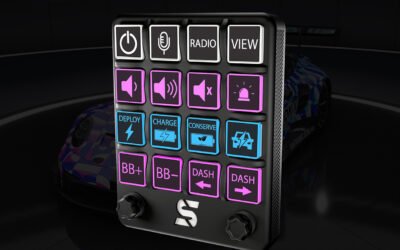
In the world of sports technology, few ideas are as exciting as turning complex research-grade tools into everyday wearable devices.
That’s exactly what Inara, a startup led by mechanical engineer Anthony Biscotto, set out to do — making muscle engagement visible through an affordable, easy-to-use EMG (electromyography) sensor.
When Inara approached Zeus Design, they had already developed a proof-of-concept prototype demonstrating real-time muscle activation tracking for gym-goers and rehabilitation professionals.
Our mission was to take that concept and engineer a reliable, compact, and manufacturable hardware platform, ready for early demos and scalable production.
From Concept to Wearable Reality
Inara’s goal was clear: make professional-grade muscle tracking accessible to everyone — not just scientists and clinicians.
Their prototype worked, but like many early designs, it needed refinement to become practical for real-world use.
They needed:
- A smaller, more integrated PCB suitable for wearable use
- Low-power operation for extended battery life
- Low-noise analogue signal conditioning to ensure accurate EMG readings
- An affordable BOM to keep the retail price within reach of fitness consumers
Zeus Design partnered with Anthony and his team to bring the engineering discipline and production mindset required to achieve those goals.
Engineering Focus: Compact, Reliable, and Optimised
Our work began by reviewing Inara’s proof-of-concept design and identifying opportunities for optimisation — both electrically and mechanically.
Low-Power Design
Wearable technology lives or dies by battery life. We re-engineered the circuitry with power-efficient components and optimised firmware-ready power domains to keep the EMG sensor running for extended sessions.
Every microamp mattered — from sensor bias currents to the quiescent draw of voltage regulators. The result was a significant improvement in energy efficiency without sacrificing measurement fidelity.
Low-Noise Analogue Front End
EMG signals are small and easily corrupted by electrical noise. Our engineers applied best-practice analogue layout techniques — careful grounding, guard routing, and component placement — to minimise interference and maximise signal clarity.
The result: a stable, high-quality signal path that provides reliable muscle activation data, even in demanding environments like gyms.
Compact PCB Layout
We redesigned the PCB to achieve a much smaller footprint, suitable for integration within Inara’s sleek wearable enclosure.
Mechanical and electrical teams worked closely to balance antenna positioning, analogue integrity, and thermal considerations — ensuring the design was both functional and production-ready.
Cost-Conscious Engineering
As a startup preparing for early trials, Inara needed to keep hardware costs low. We refined the bill of materials (BOM) to use cost-effective components with strong supply-chain availability, ensuring scalability while maintaining affordability for end users.
Building for Demonstration and Scale
The redesigned EMG board is now powering Inara’s technology demonstrations and early prototype trials, allowing trainers, physiotherapists, and athletes to experience muscle-tracking technology once confined to research labs.
With Zeus Design’s electronics design expertise, Inara can confidently demonstrate a compact, robust, and manufacturable platform to investors, partners, and early adopters.
This design lays the foundation for future iterations as Inara scales toward full production.

Results and Reflections
- Size reduced: The PCB footprint was significantly decreased, improving wearability.
- Power optimised: Extended battery life supports real-world gym use.
- Noise minimised: Clean, stable EMG signals for accurate muscle activation data.
- Cost managed: BOM choices balanced affordability with performance and availability.
The outcome is a smarter, more efficient EMG sensor — bridging the gap between lab technology and everyday training.
Looking Ahead: A Promising Partnership
Inara is now showcasing its technology at SXSW, drawing attention from fitness and rehabilitation innovators worldwide.
With early prototypes performing strongly and real-time data impressing trainers and clinicians, the company is poised for rapid growth.
Zeus Design is proud to have played a key role in helping transform Inara’s vision into functional hardware — and we’re excited to continue supporting them as the product evolves towards market readiness.
The potential is enormous, and we look forward to seeing Inara redefine how athletes and trainers understand muscle performance.
About Inara
Inara is on a mission to make muscle engagement visible. Their wearable EMG sensor delivers real-time, objective biofeedback to assess and improve performance — empowering athletes, trainers, and rehab professionals to train smarter.
Learn more or reserve your Inara device for $29 at inara.technology, and be among the first to experience this groundbreaking technology.






0 Comments